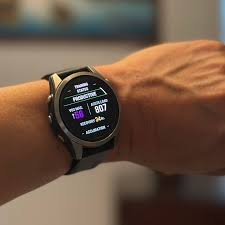
Zone 2 cardio is the secret weapon for improving heart health, increasing stamina, and burning fat efficiently. This guide explains what Zone 2 cardio is, how to find your target heart rate, its benefits for weight loss and longevity, plus examples of workouts you can start today. Learn how often to do it, how it differs from HIIT, and how it supports your overall fitness. Whether you’re an athlete or just getting started, understanding Zone 2 training can completely transform your health and energy levels.
1. What Is Zone 2 Cardio?
Zone 2 cardio refers to exercising at a moderate intensity—not too easy, not too hard. It’s the sweet spot where your body primarily burns fat for fuel while building endurance and improving heart efficiency.
Your heart rate during Zone 2 cardio should be around 60–70% of your maximum heart rate (MHR).
To estimate your MHR, use this simple formula:
220 – your age = maximum heart rate.
Then multiply by 0.6 and 0.7 to find your target range.
Example:
If you’re 40, your MHR = 180 bpm (beats per minute).
Zone 2 range = 108–126 bpm.
At this level, you can hold a conversation but not sing. You’re working, but you’re not gasping for air.
2. How Zone 2 Fits Into Heart Rate Training
Heart rate training divides exercise intensity into five zones:
| Zone | % of Max HR | Intensity | Fuel Source | Benefit |
|---|---|---|---|---|
| 1 | 50–60% | Very light | Fat | Recovery |
| 2 | 60–70% | Light to moderate | Fat | Endurance, aerobic base |
| 3 | 70–80% | Moderate to hard | Fat + carbs | Improved aerobic power |
| 4 | 80–90% | Hard | Carbs | Anaerobic capacity |
| 5 | 90–100% | Maximum | Carbs | Sprint performance |
Zone 2 is where your aerobic engine develops — it teaches your body to use oxygen and fat more efficiently. That’s why endurance athletes and even longevity researchers swear by it.
3. How to Tell If You’re in Zone 2 (Without Gadgets)
If you don’t have a smartwatch or heart rate monitor, use these simple cues:
- You’re breathing a little heavier but can still speak in full sentences.
- You feel like you could sustain this pace for an hour or more.
- You’re not straining or gasping for air.
- You’re sweating mildly, not drenched.
This is often called the “conversational pace.” Think of it as a brisk walk or an easy jog where you could chat with a friend comfortably.
4. Examples of Zone 2 Cardio Workouts
Zone 2 isn’t tied to any single activity. The goal is to maintain your heart rate in the right range consistently.
Here are the best examples:
- Brisk walking: Ideal for beginners. Keep a steady pace where talking feels easy but controlled.
- Jogging or slow running: Stay below your threshold—don’t sprint.
- Cycling: Maintain a comfortable cadence where your legs work but don’t burn.
- Rowing: Slow, rhythmic strokes focusing on consistency.
- Elliptical or treadmill: Great for low-impact indoor training.
- Swimming: Continuous laps at an easy-moderate pace.
- Hiking: Especially effective if you keep a steady pace uphill.
Duration matters more than speed. Most experts recommend 45–60 minutes per session, at least 3–4 times a week.
5. Benefits of Zone 2 Cardio
Zone 2 cardio isn’t flashy, but it’s powerful. Here’s what it does for your body and brain.
a. Builds Aerobic Endurance
Zone 2 improves your mitochondria—the “power plants” inside cells that produce energy. The more mitochondria you have, the more energy you can sustain without fatigue.
b. Enhances Fat Burning
At this intensity, your body prefers fat over carbs for energy. Over time, this improves metabolic flexibility—the ability to switch between fuel sources efficiently.
c. Strengthens the Heart
Regular Zone 2 training increases stroke volume (the amount of blood pumped per heartbeat), which lowers resting heart rate and improves cardiovascular efficiency.
d. Boosts Longevity
Studies show that people with strong aerobic capacity live longer and age better. Zone 2 cardio trains the body for endurance, stability, and resilience—all key to healthy aging.
e. Reduces Stress and Improves Mood
Moderate exercise lowers cortisol and releases endorphins. It helps calm the nervous system and improves mental clarity.
f. Improves Recovery
Zone 2 sessions enhance blood flow and oxygen delivery, helping muscles recover faster from intense workouts or strength training.
g. Supports Metabolic Health
Regular Zone 2 cardio helps regulate blood sugar, reduce insulin resistance, and improve cholesterol levels—key factors in preventing diabetes and heart disease.
6. How Often Should You Do Zone 2 Cardio?
For general health, aim for:
- 3 to 4 sessions per week,
- 45–60 minutes per session,
- Or at least 150 minutes total weekly.
If you’re training for endurance sports, go up to 4–6 hours per week. The goal is consistent, low-intensity effort—not pushing yourself to exhaustion.
7. Zone 2 vs HIIT: What’s the Difference?
High-Intensity Interval Training (HIIT) and Zone 2 cardio both improve fitness—but in very different ways.
| Feature | Zone 2 | HIIT |
|---|---|---|
| Intensity | Moderate, steady | Very high, short bursts |
| Duration | 45–60 min | 10–20 min |
| Fuel Source | Fat | Carbohydrates |
| Goal | Endurance, fat metabolism | Power, speed, calorie burn |
| Recovery Need | Low | High |
Zone 2 is about building the base. HIIT is about pushing limits.
The best training plans include both—Zone 2 for foundation and HIIT for peak performance.
8. How to Measure Your Progress
You’ll notice progress from Zone 2 cardio within 4–6 weeks if you stay consistent.
Signs of improvement:
- Lower resting heart rate
- Faster recovery after workouts
- Ability to do longer sessions without fatigue
- Steadier breathing and heart rate control
- Better sleep and mood stability
You can also track your Zone 2 heart rate range using fitness trackers like Garmin, Polar, Apple Watch, or Fitbit.
9. Common Mistakes to Avoid
- Going too hard: If you’re breathing heavily or can’t talk, you’re out of Zone 2.
- Going too easy: Strolling casually won’t challenge your heart enough.
- Skipping consistency: Doing it once a week won’t build endurance—your body adapts with repetition.
- Ignoring nutrition: Hydrate and eat balanced meals; your body needs fuel for long sessions.
- Comparing speeds: Zone 2 is personal—focus on heart rate, not pace.
10. Zone 2 for Different Fitness Goals
a. For Weight Loss
Zone 2 cardio taps into fat stores for fuel. Combined with a calorie-controlled diet, it’s one of the most effective and sustainable fat-loss methods.
b. For Athletes
Endurance athletes use Zone 2 to build their aerobic base—the foundation that supports faster, harder training later.
c. For Beginners
It’s safe and joint-friendly. You can start slow, improve stamina, and transition into more intense training as your fitness grows.
d. For Seniors
Zone 2 improves mobility, balance, and heart health without overstraining joints. It’s one of the best anti-aging exercises available.
11. Tips for Effective Zone 2 Training
- Warm up for 5–10 minutes before each session.
- Stay hydrated throughout.
- Avoid distractions: focus on breathing and rhythm.
- Mix it up: walk one day, cycle the next—variety prevents boredom.
- Track progress: use a fitness app or log to keep consistency.
- Pair with strength training for balanced fitness.
12. Sample Weekly Zone 2 Cardio Plan
| Day | Activity | Duration |
|---|---|---|
| Monday | Brisk walk | 45 minutes |
| Wednesday | Cycling | 60 minutes |
| Friday | Jog or treadmill | 45 minutes |
| Sunday | Hiking or swimming | 60 minutes |
You can adjust intensity or duration depending on your fitness level. The key is to maintain your Zone 2 heart rate throughout.
13. The Science Behind Zone 2
Zone 2 stimulates mitochondrial biogenesis, meaning your body produces more mitochondria. These are your energy factories, and more mitochondria mean higher endurance, better fat metabolism, and improved recovery.
This is why elite athletes spend up to 80% of their training time in Zone 2. It builds the aerobic base that supports everything else—speed, power, and resilience.
14. The Bottom Line
Zone 2 cardio gets a lot of praise—and for good reason. It builds endurance, burns fat efficiently, and feels sustainable even on low-energy days. Many people find it calming and almost meditative once they get into rhythm. But it’s not perfect for everyone. Some find it too slow or time-consuming compared to high-intensity workouts, and it takes patience to see results. If you expect instant fat loss or quick fitness gains, Zone 2 might feel frustrating at first. Still, for long-term heart health, stamina, and energy balance, it’s one of the most rewarding forms of exercise you can do.
Zone 2 cardio isn’t about speed or exhaustion—it’s about efficiency.
It’s the foundation of fitness: steady, consistent, sustainable.
Do it regularly, and you’ll notice:
- More energy,
- Better endurance,
- Easier weight control,
- Calmer mind,
- Stronger heart.
In short, Zone 2 cardio is the quiet powerhouse behind a long, healthy, high-performing life.
Start easy. Stay consistent. Let time do its work—your body will thank you for it.

